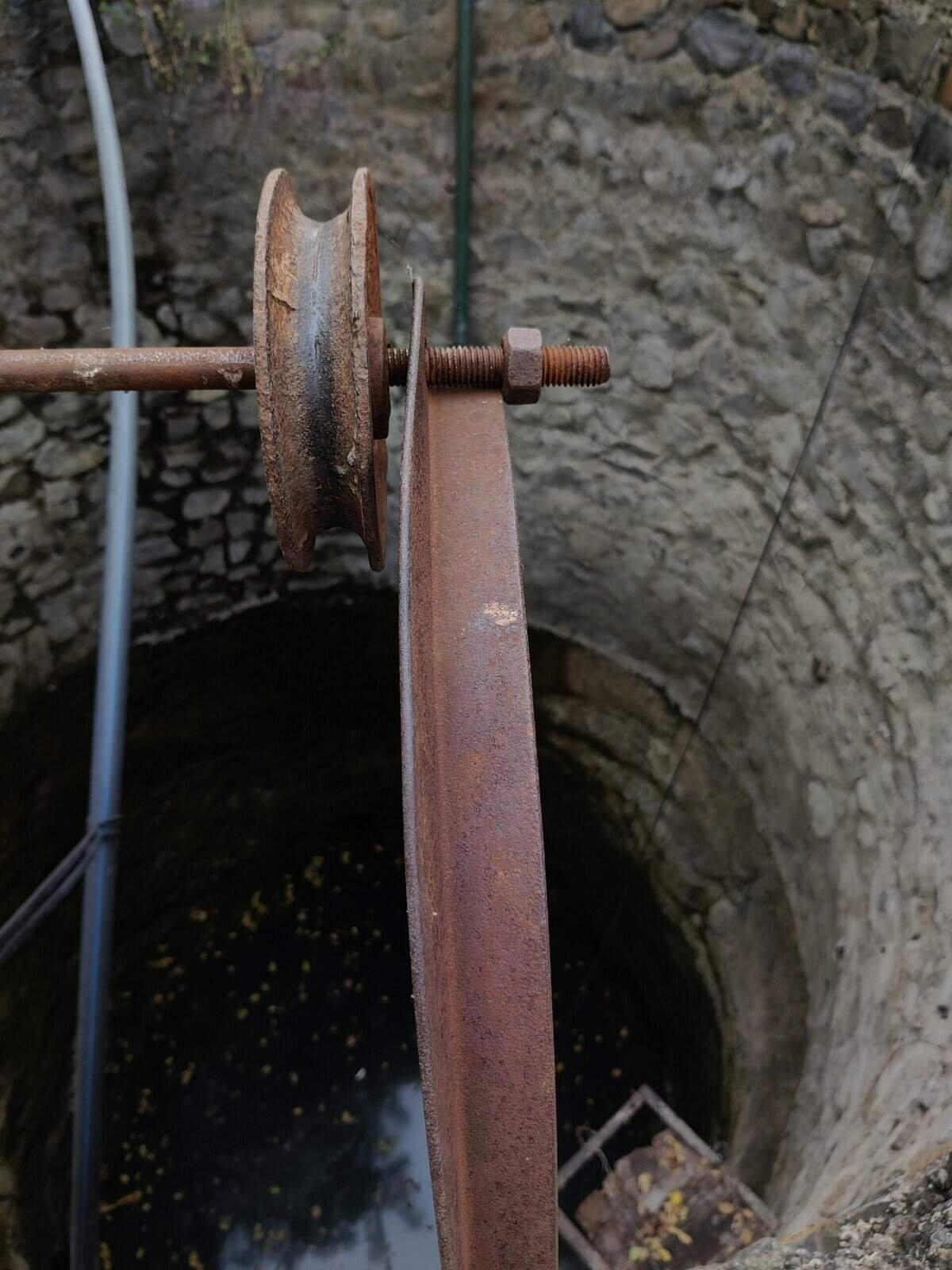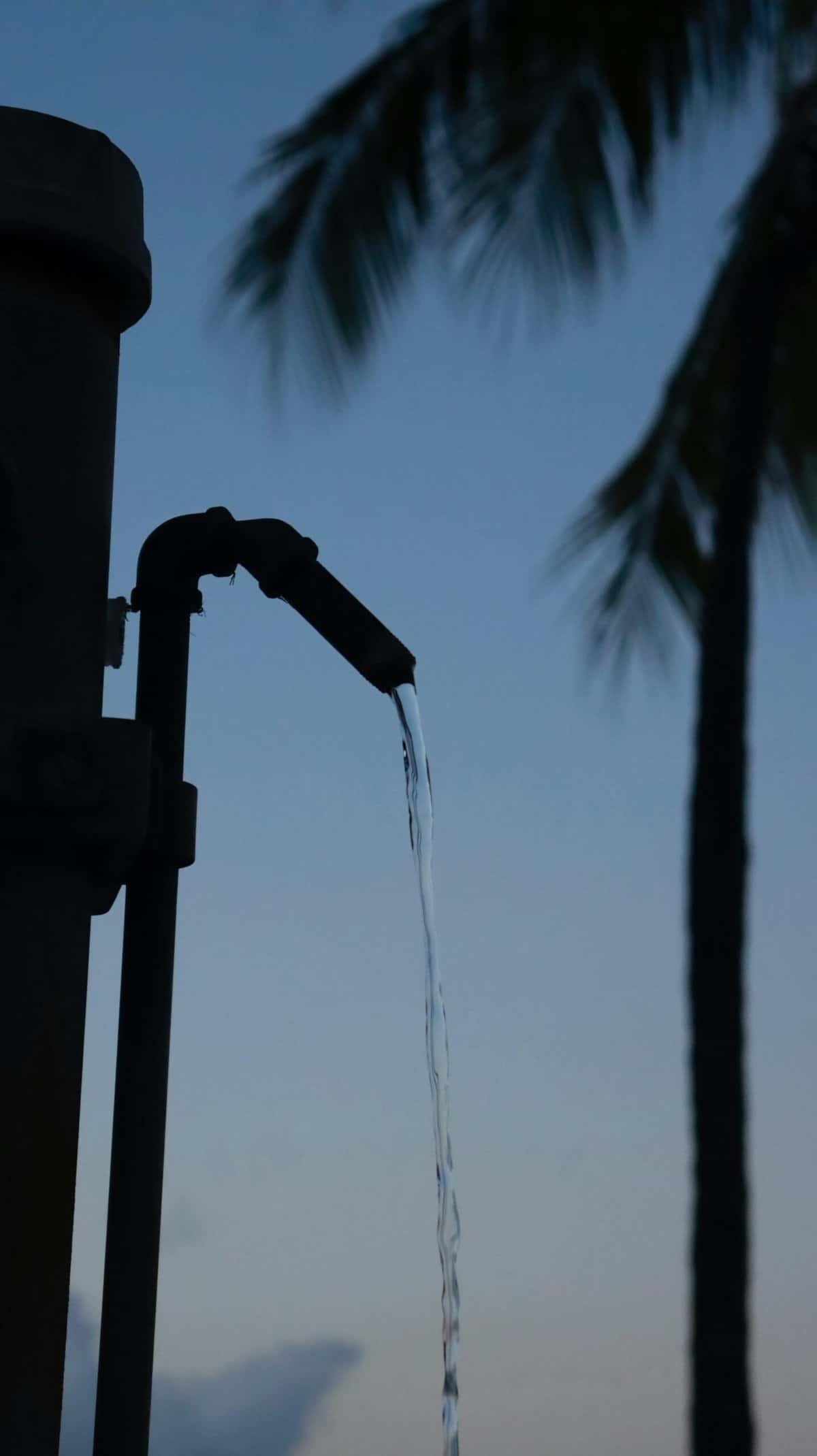Wondering how often your water well needs an inspection to keep your household water safe and your system running smoothly?
How Often Should A Water Well Be Inspected?
Keeping your water well inspected on a regular schedule protects your water quality, extends equipment life, and reduces expensive repairs. In this article you’ll find clear guidance on inspection frequency, what to check at each interval, testing recommendations, signs of trouble, and practical steps you can take.

Why routine well inspections matter
Routine inspections help you catch small problems before they become big ones. You’ll protect your health by preventing contamination and save money by identifying wear and tear early.
Regular checks also document the condition of your well over time, which is useful for resale, insurance, or regulatory compliance. You’ll have a baseline to compare against if water quality changes.
General recommended inspection and testing schedule
A simple schedule helps you keep up without guesswork. The table below gives common recommendations for private wells; requirements for community or public systems will be more frequent and often regulated.
| Item | Recommended frequency | Why it matters |
|---|---|---|
| Visual well head inspection | Monthly to quarterly | Spot obvious damage, loose caps, or surface outlet issues quickly |
| Water quality taste/odor/color check | Monthly | Early detection of changes that could indicate contamination |
| Bacterial testing (coliform/E. coli) | Annually or after events | Bacteria are immediate health risks; test yearly and after any possible contamination |
| Nitrate testing | Annually | Nitrates can come from fertilizer, septic systems, and livestock operations |
| Other chemical testing (arsenic, lead, pesticides) | Every 2–3 years or per local risk | Frequency depends on local geology and land use |
| pH, hardness, TDS, iron/manganese | Every 2–3 years | Helps maintain treatment systems and detect gradual changes |
| Professional mechanical inspection (pump, pressure tank, controls) | Annually | Ensures reliable water delivery and prevents failures |
| Water level and pump performance check | Annually or during drought | Monitors aquifer health and pump stress |
| After a major event (flooding, earthquake, well construction nearby) | Immediately and repeat testing | These events can introduce contaminants or damage the well |
Annual priorities: what you should do every year
Each year you should perform a few core checks to protect your water and system reliability. These are the actions you don’t want to skip.
- Test for bacteria and nitrates. These are the primary annual lab tests recommended for private wells.
- Visually inspect the wellhead and surrounding area for cracks, damage, or contamination sources.
- Have a professional inspect mechanical equipment—pump, pressure tank, electrical connections, controls.
- Review treatment system performance and change filters or media as recommended by the manufacturer.
By doing these each year you’ll reduce the likelihood of illness and expensive emergency repairs.
More frequent checks: monthly and quarterly tasks
Some simple tasks you can do yourself on a monthly or quarterly basis will help you notice changes early. These are quick and don’t require special tools.
Monthly:
- Look at your water for clarity, color, or particles.
- Smell and taste a small amount to check for unusual odors or flavors.
- Inspect the wellhead and cap integrity.
Quarterly:
- Check any visible electrical components for obvious problems (burn marks, loose wires) only if it’s safe—otherwise call a professional.
- Record water pump run times or any changes in pressure; sudden changes are warning signs.

After events: inspect and test immediately
Certain events require immediate action to ensure safety. You should treat these situations as emergency triggers for inspection and testing.
- Flooding or heavy surface water near the well: stop using the water (except for firefighting), have the well inspected for structural damage, and test for bacteria and other contaminants.
- Septic failure or nearby sewage spill: test immediately for bacteria and nitrates.
- Earthquakes or construction activity near the well: inspect the casing and cap for damage.
- Change in taste, odor, color, or sudden drop in pressure: test and inspect right away.
If contamination is confirmed or suspected, don’t drink the water until you have a safe alternative and remediation steps are completed.
Testing breakdown: which tests and how often
Testing frequency depends on your well’s risk profile and local conditions. Below is a practical guide to common tests and recommended intervals.
| Test | Typical frequency | Notes |
|---|---|---|
| Total coliform / E. coli | Annually and after any event | Immediate health concern if positive |
| Nitrate | Annually | Especially important for infants and pregnant people |
| Arsenic | Every 2–3 years (or once if low risk) | Based on regional geology |
| Lead | Every 2–3 years or after plumbing changes | If you have older plumbing or new fixtures |
| Pesticides/herbicides | Every 1–3 years if nearby agriculture | Test more if you observe chemical taste/odors |
| Volatile organic compounds (VOCs) | Every 1–3 years if near industrial sites | Includes gasoline, solvents |
| Iron and manganese | Every 2–3 years | Affects staining and treatment equipment |
| pH and hardness | Every 2–3 years | Guides water treatment and appliance protection |
| Total dissolved solids (TDS) | Every 1–3 years | General indicator of mineral load and contamination |
| Sulfate | Every 1–3 years if you notice taste/odor | High sulfate can cause taste and laxative effects |
Adjust the schedule based on local risks, well age, and previous results. Keep copies of lab reports and dates for trend tracking.

Private vs. public/community wells: different rules
If your well serves only your household (private well), you are usually responsible for testing and inspections. Public or community wells are regulated and typically require more frequent testing and professional inspections.
For private wells:
- Follow the annual and event-driven schedule above.
- Check state and local guidance—some areas offer free or subsidized testing.
For community wells:
- Expect routine monitoring by the water purveyor and legal compliance with drinking water standards.
- You should still monitor your tap water and report any concerns to your water provider.
Visual inspection checklist: what to look for
You can do a useful visual inspection without specialized equipment. Do this regularly and note anything unusual.
- Well cap: firmly attached and watertight, no cracks.
- Surface seal: no gaps around casing; seal intact to prevent surface water entry.
- Casing: not corroded or damaged above ground.
- Distance to contamination sources: ensure septic systems, fuel storage, livestock areas, and chemical storage are at safe distances.
- Drainage: ground slopes away from well to prevent pooling near the casing.
- Vegetation and debris: keep the area clear of plants and items that could damage the well.
- Visible plumbing leaks: none around pressure tanks or exposed piping.
- Electrical box: secure, no signs of burning or water intrusion (call electrician if unsure).
Record what you see and the date to build a maintenance history.

Mechanical inspection: what a professional will check annually
A professional inspection will go deeper into parts you shouldn’t handle yourself. When you hire a licensed well contractor or pump technician, they’ll usually inspect the following:
- Pump performance and amperage draw
- Pressure tank condition and pressure settings
- Check valves, pressure switches, and control wiring
- Water flow rate and static/pumping water levels
- Well yield and recovery
- Surface seal integrity and sanitary well cap
- Inside well components (if necessary) like the drop pipe and pump condition
Ask for a written report and recommended actions after the inspection.
Signs your well needs inspection right now
If you notice any of the following, act promptly. These signs can indicate contamination or equipment failure.
- Cloudy, discolored, or rusty water
- Strange taste or sulfur (rotten egg) smell
- Sudden drop in water pressure or intermittent supply
- Sand or grit in the water
- Recurrent illnesses in household members (stomach illness, etc.)
- Pump runs more frequently or longer than usual
- High electricity bills tied to pump operation
- Visible damage to the wellhead or plumbing
Don’t ignore these signs—address them quickly to avoid health hazards or costly repairs.

What to do if bacterial contamination is detected
If a lab confirms bacteria such as total coliform or E. coli, follow these steps to protect your household.
- Stop using well water for drinking, brushing teeth, cooking, or preparing baby formula until it’s treated and retested. Use bottled water or an alternative safe source.
- Consult your local health department for guidance—procedures and recommendations vary.
- Hire a licensed well professional to inspect for contamination sources and structural issues.
- Shock chlorinate the well (disinfection) as recommended and retest the water after treatment. Professionals usually perform this safely and thoroughly.
- Follow up with additional testing to ensure the bacteria have been eliminated before returning to regular use.
Keep records of remediation and testing results.
Maintaining treatment systems: filters, softeners, UV systems
If you have water treatment devices, they also need scheduled checks and maintenance, as they protect your home and health.
- Sediment filters: replace as recommended—often every 3–6 months depending on water quality.
- Carbon filters: replace per manufacturer instructions to avoid bacterial growth.
- Water softeners: replenish salt regularly and clean brine tanks annually.
- Reverse osmosis systems: change membranes and filters as recommended and sanitize system annually.
- UV disinfection units: replace bulbs annually and check quartz sleeves for fouling.
- Backflow prevention devices: test periodically per local code.
Neglecting treatment systems can allow contaminants to pass through and may lead to system failure.
DIY testing vs. professional lab testing
You can perform some preliminary checks, but certified lab testing is essential for reliable results.
DIY kits:
- Useful for quick checks and to spot obvious problems.
- Often less accurate and not accepted by regulatory bodies.
- Good for interim monitoring between lab tests.
Professional lab testing:
- Use accredited laboratories to get accurate, legally defensible results.
- Provides detection limits, exact concentrations, and formal reports.
- Recommended for initial testing, confirmations, and after remediation.
When in doubt, send a sample to a state-certified lab—your health may depend on the accuracy.
Costs: what to expect
Costs vary by region, the number of tests, and whether you hire a professional. Below are typical ranges for planning.
| Service | Typical cost range (USD) |
|---|---|
| Professional annual mechanical inspection | $100–$300+ |
| Bacterial test (lab) | $20–$75 |
| Nitrate test (lab) | $25–$100 |
| Comprehensive panel (multiple contaminants) | $100–$400+ |
| Shock chlorination by professional | $150–$400 |
| Pump repair or replacement | $300–$3,000+ depending on depth and pump type |
| Well drilling or replacement | $5,000–$25,000+ depending on depth and geology |
Prices depend on local labor costs and the complexity of your well. Getting written estimates helps you compare.
Safety tips for inspections and maintenance
Personal safety and well integrity are top priorities. Follow these precautions when inspecting or maintaining your well.
- Do not open or remove the well cap unless you are qualified and have the correct sanitary cap. Opening the well can introduce contamination.
- Turn off power before touching electrical components.
- Avoid standing water or wet surfaces near electrical gear.
- Use proper personal protective equipment (gloves, safety glasses) if handling chemicals or doing chlorination.
- Hire licensed professionals for pump work, wiring, or any in-well repairs.
- Keep children and pets away from the wellhead during inspections.
If you’re unsure, call a professional. The risks of improper handling can be serious.
Record keeping: why it’s essential and what to store
Good records make future inspections faster and more effective. Keep these items organized and accessible.
- Well construction report and well log (depth, casing, owner, driller)
- Dates and copies of all lab results
- Inspection reports and maintenance invoices
- Pump and equipment model numbers, manuals, and installation dates
- Photos of the wellhead and surrounding area
- Notes on any events (flooding, nearby construction) and actions taken
You’ll thank yourself later when you need to prove compliance, diagnose problems, or sell the property.
How well age and construction affect inspection frequency
Older wells or those with known vulnerabilities require closer attention. You should adjust inspection frequency if any of the following apply:
- Well older than 20–30 years: consider more frequent mechanical inspections and water testing.
- Wells with documented contamination history: test more often until stable.
- Dug wells or shallow wells: test more frequently because surface contamination risk is higher.
- Wells with damaged or nonstandard well caps/casings: repair and monitor closely.
A licensed well contractor can evaluate your well’s vulnerability and recommend a tailored schedule.
Practical maintenance checklist you can follow
Use this checklist to stay organized and consistent. Mark dates and notes each time you perform items.
Weekly/Monthly:
- Look, smell, taste check water (non-invasive)
- Inspect well area for debris or new contamination sources
Quarterly:
- Check visible plumbing and pressure tank area for leaks
- Verify that drainage slopes away from the well
Annually:
- Test for bacteria and nitrates
- Have a professional inspect pump and mechanical components
- Review and replace treatment media/filters if needed
After events:
- Inspect immediately after floods, septic issues, or ground movement
- Test for bacteria and other likely contaminants
Keep the list near your records for easy reference.
When to call a professional immediately
Certain problems should trigger an immediate call to a licensed well professional or health authority.
- You detect E. coli or serious bacterial contamination.
- Pump stops working or you have no water.
- You see structural damage to casing or wellhead.
- There’s been a known chemical spill near the well.
- You notice significant sand or sediment production that could damage equipment.
Fast action reduces health risks and can prevent expensive damage.
Questions to ask the inspector or lab
When you hire a pro or submit samples, ask the right questions to ensure quality service.
- Are you licensed and insured for well inspections and repairs?
- Which lab will analyze my water samples and is it state certified?
- What tests do you recommend based on local risks?
- How will you document findings and recommend follow-up?
- What guarantees or warranties do you provide on repair work?
Clear answers will help you make informed choices and avoid surprises.
Long-term planning: monitoring trends and upgrades
Think beyond immediate issues. Long-term planning can save money and ensure safe water for years.
- Track test results over time to spot trends before they become problems.
- Budget for replacing aging pumps and treatment systems before failure.
- Consider upgrades like sealed sanitary well caps, improved drainage, and modern pressure controls.
- If your area’s groundwater quality is changing (e.g., due to increased agriculture or development), increase monitoring frequency.
Proactive planning prevents emergency situations and keeps your water reliable.
Final thoughts and action steps
You’ve learned the practical frequencies and reasons for inspecting your water well. Now put a simple plan into motion:
- Do a quick visual check and taste/odor test monthly.
- Schedule annual bacterial and nitrate testing with a certified lab.
- Arrange a professional mechanical inspection once a year.
- Test after any flooding, septic issue, or major change near your property.
- Keep detailed records of every inspection, test, and repair.
By sticking to these guidelines, you’ll protect your household’s health, preserve your well’s lifetime, and avoid many common problems before they arise. If you’re unsure about any step, contact a licensed well contractor or your local health department for region-specific guidance.
